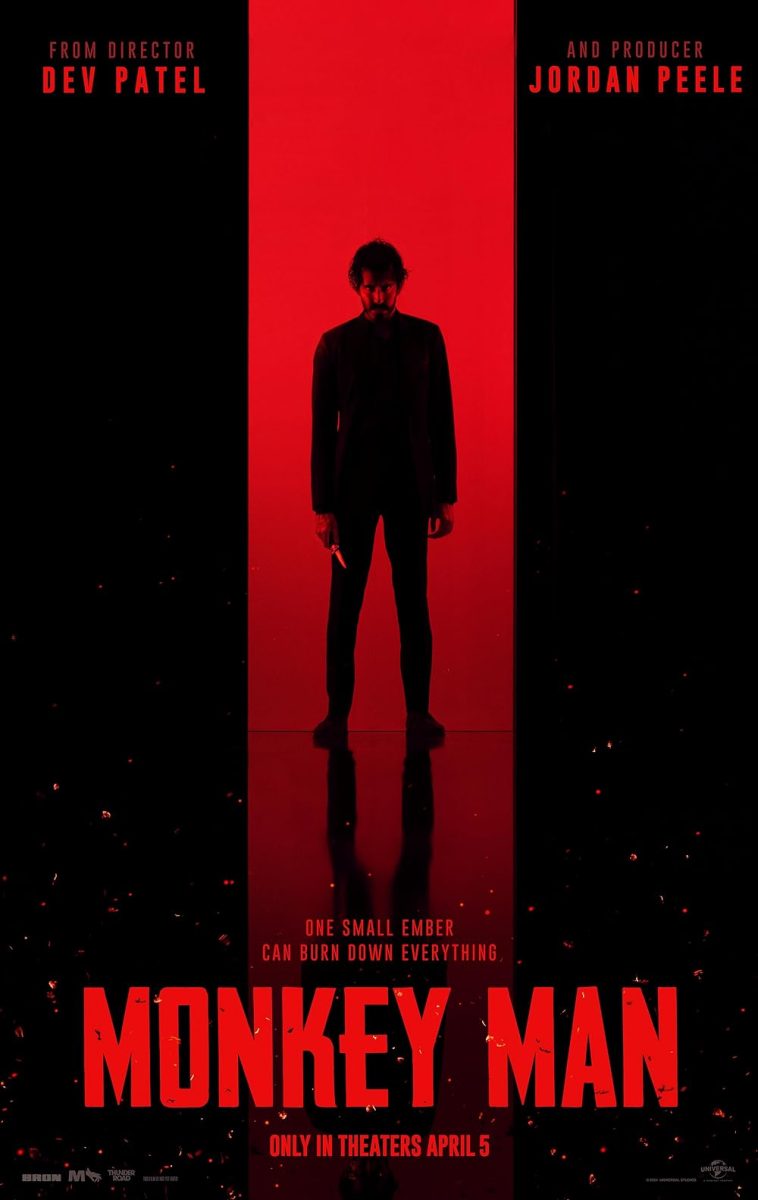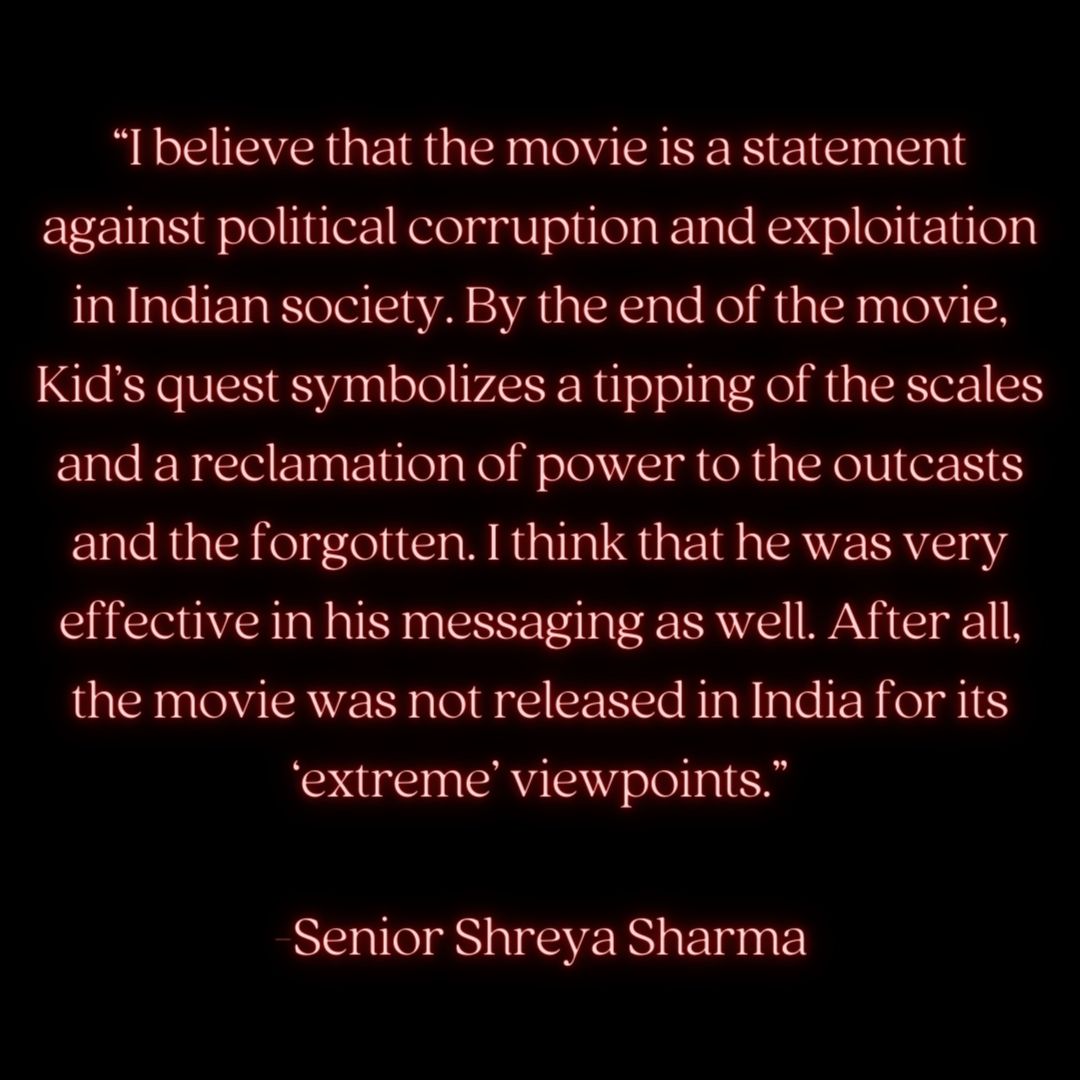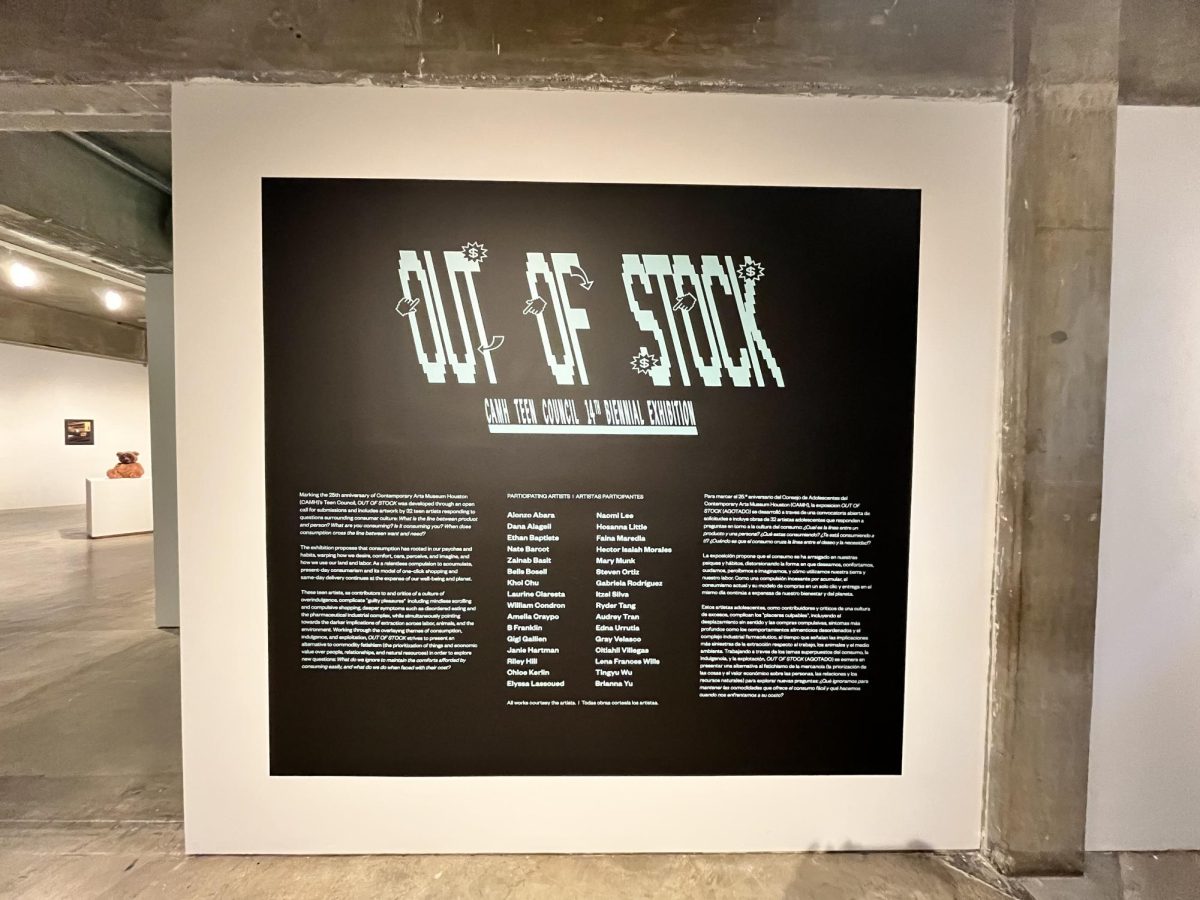The neo-noir genre has gained popularity in recent years, especially with the popularity of the well-known “John Wick” franchise which is often the standard of comparison for similar movies. As soon as I saw the social media promotion of “Monkey Man,” I initially thought it would be another overproduced action movie with more explosions and fight scenes than lines. I was very, very wrong.
When I told my friend I was reviewing Dev Patel’s “Monkey Man,” the first thing she told me was that it was “very rated R,” and indeed it was. The movie is riddled with brutality, both choreographed and real, but this is entirely necessary for the movie to communicate its message and themes.
The movie follows Dev Patel, who co-wrote and directed the movie, as Kid, a bare-knuckle fighter working in the underground Tiger Temple boxing ring in the poverty-stricken (and fictional) city of Yatana, India. Throughout the movie, Kid uses clever deception and patient strategy to infiltrate his way into King’s, a high-end brothel for the uber-wealthy and powerful. His end goal is to kill Rana Singh. The movie later reveals that Rana brutally killed Kid’s mother years ago, in which Kid’s village was pillaged in the name of taking it as holy land.
While the movie is incredibly violent and bloody, it is also incredibly beautiful. While most neo-noir films perpetually take place at night and have predominantly black and gray color palettes, “Monkey Man” employs vibrant colors throughout the entirety of the movie. This creates a visually stunning masterpiece in which every time you pause, you are going to see something cinematic- whether that be an excellently choreographed and neon light-lit fight scene or the dresses of hijra as they fight to support Patel in his quest.
Speaking of the hijra, “Monkey Man” is not just a mindless movie about violence. Unlike other revenge-oriented movies, like “John Wick,” “The Equalizer” and “The Man From Nowhere,” “Monkey Man” deliberately interweaves social commentary about a variety of social issues in India. Patel criticized how religion can be abused to manipulate the masses with the character Baba Shakti.
Shakti is a Hindu leader who deceives his followers with religious fanaticism. While his goal is to get them to blindly play into his quest for political power, Kid shows the other side of the coin to religion. While Shakti facilitated the massacre of Kid’s village in “the name of God,” Kid repeatedly finds solace in the prayers and Hindu stories his mother taught him. The movie frequently goes to scenic flashbacks of Kid’s childhood in the village with his mother. In these flashbacks, viewers feel as if they are viewing flashbulb memories, with up-close camera shots capturing the heart-warming moments. Kid’s mother taught him about Hanuman and had him recite prayers about finding comfort, peace and love in their Hindu gods. Through this contrasting dynamic, Patel highlights both religion’s healing and destructive nature.
The movie has been frequently compared to “John Wick.” The movie even refers to the weapon Wick uses in the film when Kid buys a gun towards the start of the movie. Admittedly, there are similarities. In virtually all neo-noir movies, the protagonist is never the aggressor. He only reacts to the atrocities of others. Box office ratings show the proof– audiences love it when there is vindication for the abused and the oppressed. There’s also nothing more Hollywood loves than a character who fulfills that vindication for them, all while clad in a polished black suit.
“John Wick” didn’t kill Russian gangsters because they stole his car, he killed them because they murdered his beagle that was gifted to him by his late wife. In “The Equalizer,” Denzel Washington’s character only goes on a rampage after his attempts at peace with Russian sex traffickers fail. Kid does not fight because he wants to, but because he has to. As Patel himself describes, Kid is an underdog, which makes him relatable to audiences.
Several differences make “Monkey Man” its own unique movie. Although the movie is serious in its social commentary, there are also seamlessly incorporated elements of humor, such as when Kid tries to jump out a window to escape Rana’s men, but instead bounces right off. Additionally, the movie incorporated heavy cultural elements. From the story of Hanuman to the footage of real-life protests in India against Prime Minister Narendra Modi and the Bharatiya Janata Party, this is where the movie heavily distinguished itself from movies like “John Wick.” I am the biggest “John Wick” fan you will ever find, but “Monkey Man” conveys a much deeper meaning.
This brings me to my final praise of the movie: “Monkey Man” is amazing because there is not just one underdog being fought for. Unlike other neo-noir films, the protagonist does not start strong. Viewers see Kid claw his way to becoming “Monkey Man” with the help of the hijra, a group of transgender and gender non-conforming people in India, while he is originally getting pummeled nightly at the start of the movie. By portraying the hijra in this way, Patel gives this group representation while also spotlighting the prejudice they face. Patel skillfully unites those who are oppressed for various reasons through these plot points.
While police brutality and discrimination against the hijra, overall poverty and corruption are highlighted in the movie, there is one theme that is recurring– violence against women. At King’s, women are ordered off of menus. Women are trafficked, and Kid’s mother was beaten to death after Rana attempted to rape her. The real-life footage incorporated into the film also shows women being beaten by the police. In avenging his mother by killing Rana and Queenie (Rana’s wife who runs the brothel), he also helps the women they had been exploiting escape. This funnels into how the film is more bloody than any action or neo-noir film I have seen. The only movie remotely on the level with Monkey Man’s gore is “The Equalizer,” and even then, the special effects combined with actual footage make “Monkey Man” ten times more violent.
As an avid consumer of film and the neo-noir genre, I can confidently say that “Monkey Man” was one of the only modern films that left me feeling “wow” once the credits started rolling. From the striking visuals to thought-provoking social commentary, “Monkey Man” entertains audiences while encouraging them to think and reflect on issues that not only affect Indian society but the entire world. The blood is offset by the peace and love that Kid feels for his religion, culture and mother. As he falls at the end of the movie after killing Shakti, viewers are left with a sense of closure and something Kid never lost: hope.












Adelynn Rubio • May 10, 2024 at 2:21 pm
Your word choice and syntax in this article is incredible! You’re such an amazing writer, and I definitely want to see this movie even more now.
Tobias • May 6, 2024 at 2:00 pm
I need to accelerate plans to see this movie with my friend, evidently. I loved the in-depth analysis of the care put into the film.